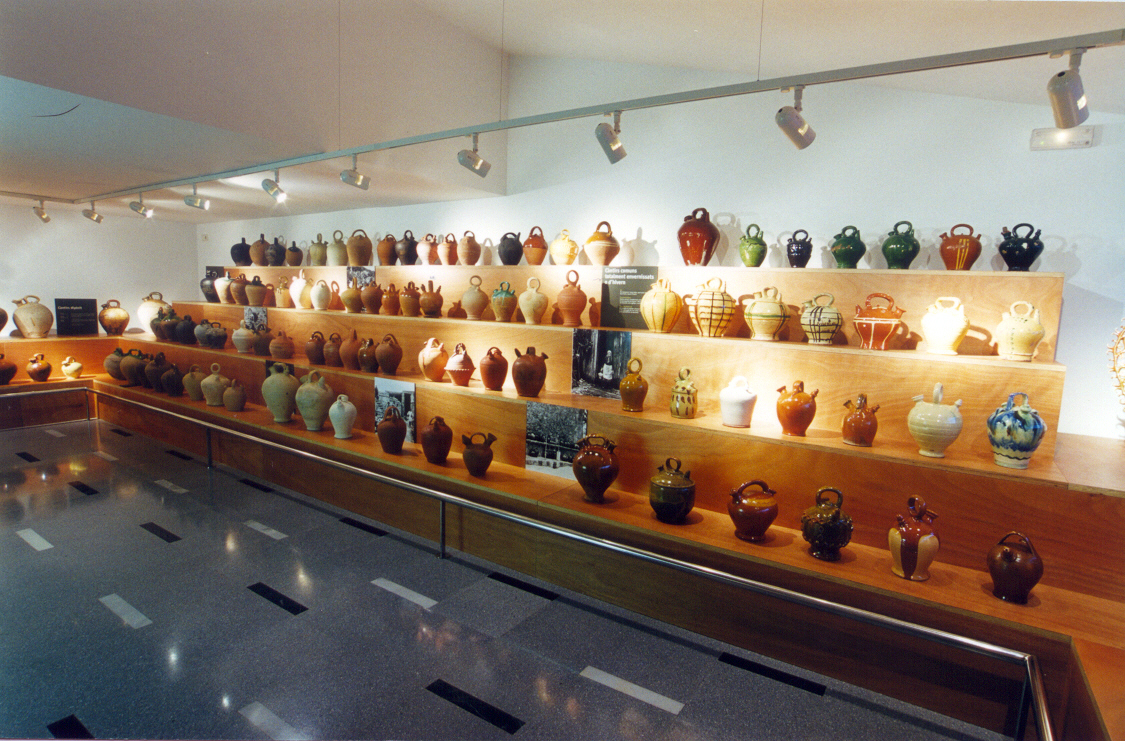Other Botijo Museums
Argentona Botijo Museum (Barcelona, Catalonia)
The Botijo Museum (Museu del Càntir d'Argentona in Catalan), founded in 1975 in Argentona (Barcelona), is currently installed in a four-story building inaugurated on July 20, 2000. The museum is an autonomous body of the City Council from Argentina.

The origins of the museum are related to the Botijo Festival, which has been celebrated on August 4 since 1951 and which recovered a festival celebrated since the 17th century on the occasion of a "popular vote" to San Domingo, patron saint of waters, for protecting the population from a serious plague epidemic. Annually, coinciding with the Botijo Festival, the Museum organizes the International Ceramics and Earthenware Fair in order to disseminate and encourage the maintenance of traditional pottery and promote the values of creative ceramics. The festival and the Museum were promoted by Jaume Clavell i Nogueras and a group of citizens grouped under the name of Amics d'Argentona.
Exhibition
The collection includes more than 3,000 vessels, the most significant of which can be seen in the new rooms of the museum. The permanent exhibition introduces the history, typology and process of making botijos. The second floor of the museum is dedicated to monographic exhibitions. The permanent exhibition is presented in five thematic areas and the Picasso Space.
- First area. Humanity and water: a cultural relationship. In a secluded environment, we study how the relationship between humanity and water is, above all, cultural, and is reflected in vessels that fulfill the same functions as the jugs.
- Second area. Forms and functions of water vessels: morphologies. This area shows how the cultures of the Iberian Peninsula have developed earthenware vessels intended to fulfill various functions related to water in the home, such as jugs, jugs, ewers or buckets.
- Third area. History of the botijo: from the Bronze Age to the present day. This area presents the periods of maximum splendor of the botijo: the Mediterranean Bronze Age, Hellenistic Greece, the resurgence at the end of the Middle Ages, the rise of the 17th and 18th centuries, the great production of the first third of the 20th century and the decline of the second half of it.
- Fourth area. A botijo for each function: the typologies. The wide variety of botijo shapes is reflected in this area of the museum: large, common, winter, field, anthropomorphic, zoomorphic, decorative and artistic botijos. There are also wooden, metal, cork and glass jugs.
- Fifth area: botijo manufacturing process. It shows, through various audiovisuals, the traditional process of manufacturing botijos, from the extraction of the earth to the marketing of the finished piece, including the molding of the clay, the decoration and the firing.
The geographical origin of the pieces is very broad and the most important pottery producing centers in Catalonia, Spain and the rest of the world are represented.
In July 2006, the Picasso Space was inaugurated, where four examples of the Malaga artist's jugs are exhibited and the relationship between Pablo Picasso and ceramics is explained.